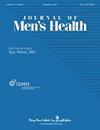基于交叉滞后模型的13-15岁男性青少年体成分和运动质量影响因素的随机对照研究:肥胖水平、唾液睾酮和运动加热量限制干预
IF 0.6
4区 医学
Q4 Medicine
引用次数: 0
摘要
背景:肥胖是一个全球性的健康问题,对儿童和青少年有很多不利因素,尤其是对男孩的性发育不利。运动和热量限制对改善肥胖是有效的;然而,应该详细研究影响这些改善的因素。我们对影响13-15岁男性身体成分和体能变化的因素进行了一项随机对照研究。方法:根据体脂百分比将受试者分为三组,并随机分为对照组和干预组。本研究的实验条件基于一个为期12周的封闭训练营。干预组接受有氧运动、阻力运动和热量限制的组合。所有受试者都被统一安置,有一个标准的饮食和休息时间,而对照组在运动干预时间内完成了他们的课程,没有饮食限制。受试者在干预前后进行身体成分和体能测试。结果:运动训练和能量限制饮食对脂肪损失和体能的影响仅限于相对较低的下肢爆发力和心肺耐力,对身体成分有显著影响。脂肪量减少受肥胖的影响,个体变异性较高,肥胖水平越高,脂肪量减少越大。BFP的减少不受肥胖水平的影响,干预组与唾液睾酮(ST)存在轻度因果关系,但对照组没有。ST可预测运动者未来的BFP;在长时间运动和热量限制的条件下,ST高的个体的BFP降低幅度更大。结论:通过干预,更多肥胖的男性青少年可以获得更大的脂肪量减少,但肥胖水平对无脂肪量和运动质量的影响最小。ST段基础较高的青少年男性往往会改善身体成分,ST段可以预测未来的BFP,但需要在运动干预的背景下进行。本文章由计算机程序翻译,如有差异,请以英文原文为准。
Randomized Controlled Study of Factors Influencing Body Composition and Exercise Quality of Male Adolescents Aged 13–15 Years Based on Cross-Lagged Models: Obesity Level, Salivary Testosterone, and Exercise Combined with Caloric Restriction Intervention
Background : Obesity is a worldwide health problem with many disadvantages for children and adolescents, especially for the sexual development of boys. Exercise and caloric restriction are effective in improving obesity; however, the factors influencing these improvements should be studied in detail. We conducted a randomized controlled study of factors affecting changes in body composition and physical capacity in males aged 13–15 years. Methods : Subjects were divided into three groups based on body fat percentage (BFP), and randomly divided into control and intervention groups. The experimental conditions of this study were based on an exercise camp with a 12-week closed training period. The intervention group received a combination of aerobic exercise, resistance exercise, and caloric restriction. All subjects were uniformly housed and had a standard time for diet and rest, whereas the control group performed their coursework during the exercise intervention time and had no dietary restrictions. The subjects were tested for body composition and physical capacity before and after the intervention. Results : The effect of exercise training and energy-restricted diets on fat loss and physical capacity was limited to relatively lower extremity explosive strength and cardiorespiratory endurance, with a significant effect on body composition. Fat mass reduction was influenced by obesity with a high level of individual variability, with higher levels of obesity resulting in greater reductions in fat mass. The reduction in BFP was not affected by the level of obesity, and there was a mild causal relationship with salivary testosterone (ST) in the intervention group but not in the control group. ST was predictive of future BFP in exercisers; individuals with high ST had a greater reduction in BFP under conditions of prolonged exercise and caloric restriction. Conclusions : More obese male adolescents can obtain greater fat mass reduction with the intervention, but fat-free mass and exercise quality are minimally affected by the level of obesity. Adolescent males with higher ST ground tend to gain improvements in body composition, and ST can be predictive of future BFP but needs to be in the context of an exercise intervention.
求助全文
通过发布文献求助,成功后即可免费获取论文全文。
去求助
来源期刊

Journal of Men's Health
Medicine-Urology
CiteScore
0.70
自引率
28.60%
发文量
153
审稿时长
10 weeks
期刊介绍:
JOMH is an international, peer-reviewed, open access journal. JOMH publishes cutting-edge advances in a wide range of diseases and conditions, including diagnostic procedures, therapeutic management strategies, and innovative clinical research in gender-based biology. It also addresses sexual disparities in health, life expectancy, lifestyle and behaviors and so on. Scientists are encouraged to publish their experimental, theoretical, and descriptive studies and observations in as much detail as possible.
 求助内容:
求助内容: 应助结果提醒方式:
应助结果提醒方式:


